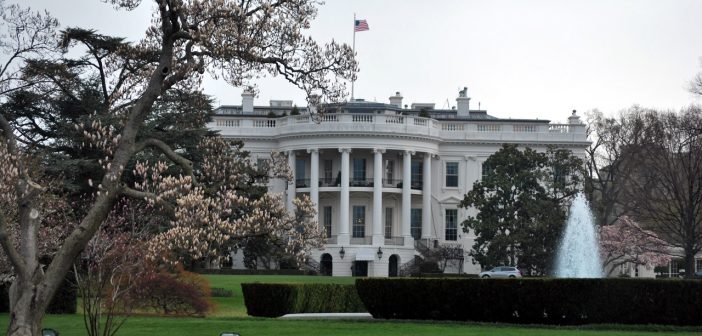Now that Donald Trump has been elected the America’s 45th president, it’s vital he transition from campaign rhetoric to building thoughtful, detailed and realistic defense plans.
Four core principles should shape his agenda:
- a defense spending plan that addresses readiness and modernization needs without breaking the bank. The Budget Control Act should be scrapped, but only in exchange for a wider deficit reduction package;
- modernization of equipment is a priority, not increased force structure. Success can’t be measured simply in numbers of things bought, rather changing how the Pentagon thinks about how it fights, how it buys its gear and services, and how it recruits, retains and educates its force. To that end, retain Obama administration efforts to forge a more innovative, flexible and efficient force, which will take extra effort when budgets are going up. Nothing drives change better than major needs and constrained resources;
- reassure allies deeply worried about statements made during the campaign, especially with regard to America’s future NATO role and the dangers posed by a revanchist Russia; and
- adopt a more integrated approach to US security that more effectively brings to bear the nation’s formidable military, diplomatic, political, economic and strategic messaging abilities.
First, on spending, US defense spending was poised to increase no matter who got elected last week. Under the BCA, DoD’s topline was going to rise, but with Trump at the White House and Republicans controlling Congress, the Pentagon is expected to get significantly more money. The only question is how much more.
In September, Trump embraced the Heritage Foundation’s proposal to build more ships, planes and dramatically expand the size of the Army that would cost between $70 and $100 billion a year more than is currently being spent on the US military.
Under the terms of the BCA and the spending caps it imposed, the Heritage plan was regarded as beyond reach. But if you combine a generous base budget increase with $59 billion in Overseas Contingency Operations funding, you’re within striking distance of the lower edge of the Heritage boundary.
While scrapping the BCA and increasing spending is likely, a larger defense budget would demand hard choices. Trump has said BCA would be scrapped, with civilian and overhead cuts freeing resources for a bigger defense budget. The problem with manpower and overhead cuts is that they time to implement are slow in yielding savings. He has also suggested $4 trillion on new infrastructure while cutting taxes and shielding entitlements, which will burgeon a national debt that’s already approaching $20 trillion.
The national debt was not a major campaign issue, but it’s unlikely a Republican-controlled Congress will embrace large new spending projects without finding offsets elsewhere in the federal budget, setting up a fight with Democrats who will fight to protect non-defense domestic discretionary spending.
Under the BCA, debt growth slowed, but it’s still rising – at $19.8 trillion as of Nov. 16 – and could hit the borrowing limit in March. It’s worth remembering that the BCA was instituted to ensure the United States didn’t ruin its perfect credit rating by defaulting on its debt.
On that score, as the Republican candidate, Trump suggested Washington might renegotiate its debt, an approach commonplace in private industry but regarded by capital markets akin to debt default when executed by nations.
After the 2011 US debt debacle, the General Accountability Office wrote: “Delays in raising the debt limit can create uncertainty in the Treasury market and lead to higher Treasury borrowing costs. GAO estimated that delays in raising the debt limit in 2011 led to an increase in Treasury’s borrowing costs of about $1.3 billion in fiscal year 2011. However, this does not account for the multiyear effects on increased costs for Treasury securities that will remain outstanding after fiscal year 2011. Further, according to Treasury officials, the increased focus on debt limit-related operations as such delays occurred required more time and Treasury resources and diverted Treasury’s staff away from other important cash and debt management responsibilities.”
The US dollar is a global reserve currency because Washington has always repaid its debts in full, which is why the world is willing to keep loaning it money at preferential rates. Once that rating is damaged, it can never be fully restored, which is why careful stewardship of the debt is so critically important.
Although Trump has committed himself to dismantling the legacy of the Obama administration, he would be well served by retaining the Pentagon’s thoughtful efforts to shape a more innovative force that remains ahead of Russia and China as they rapidly improve their capabilities.
Yes, the United States needs more attack submarines, long-range bombers, new long-range fighters, better strike weapons as well as sweeping modernization of its strategic nuclear forces. But it also needs to get better at harnessing rapid technological changes to ensure that it can out-adapt its potential adversaries.
To this end, the Pentagon’s four efforts to harness internal and external innovation to keep it and its allies in the military lead must be embraced and improved, rather than discarded: the Defense Innovation Initiative including its outreach to commercial industry via Defense Innovation Unit Experimental offices in Silicon Valley, Boston and Austin, Texas; the Strategic Capabilities Office that with modest changes is transforming existing systems into far more flexible, potent and surprising weapons; the Third Offset Strategy focused on breakthrough technologies and concepts to offset gains by nations committed to harming the United States and its allies; and accelerate overdue personnel reforms and shed excess infrastructure.
Each of these initiatives was born of the Pentagon’s need to deliver better capabilities on a limited budget. The question is whether that spirit of innovation and urgency will survive when defense spending taps are spun wide open.
Finally, given his comments during the campaign, Trump must reassure allies that worry the United States will leave them in a lurch. So far, it was President Obama who spoke on Trump’s behalf regarding America’s future commitment to NATO. The president elect has been silent on the Atlantic Alliance or Asia where his opposition to Trans-Pacific Partnership trade pact and nuclear proliferation have fueled angst.
That the president-elect’s first call was to Ireland followed by a talk with Russian President Vladimir Putin rather than close allies has only heightened concerns.
That Trump and Putin would talk is understandable. But given Trump’s glowing view of Putin and Moscow’s unprecedented involvement in Trump’s favor during a hard-fought campaign, the phone call – disclosed by the Kremlin – only reinforces the perception that America and Russia will build a “strong and enduring relationship” at the expense of allies Russia continues to threaten military, economically as well as politically. Across Europe, Moscow has been funding a vast assortment of far right, anarchic left-wing and environmental movements all aimed at damaging Europe’s political status quo by sowing as much chaos as possible.
The Brexit campaign, the rise of the Independence Party in the UK and the National Front in France have all benefitted from Russia, which in turn stands to benefit from their success, whether in damaging the European Union or steering the policies of leading states that could stand up to Russia.
Whether the new administration continues to view Russia as a threat will have profound implications for US defense, a question that will be answered soon whether the Trump White House extends sanctions imposed after Russia’s invasion of Ukraine.
The easing of US pressure on Russia could set the stage for increased dialogue, but could backfire if Moscow is let off the hook for its Ukraine invasion and takes advantage of good relations to seize either territory or further pressure allies with devastating consequences for America’s relationship with its European friends. Moreover, if Russia is no longer regarded as a threat, that could argue against equipment and troops needed to augment American forces in Europe that are dedicated to reassuring NATO allies.
Whether the White House will continue to regard Russia as a threat, Moscow, Beijing, Tehran and Pyongyang are all working to develop powerful military capabilities specifically engineered to threaten US forces, interests and allies worldwide.
A stronger military also must be far more closely integrated with the nation’s diplomatic and economic tools to achieve long-term aims. Military force is what gives diplomacy credibility and ensures stability that is vital to economic prosperity, but not every problem can be resolved by force.
And a stronger military doesn’t only mean a bigger force with more gear. It means being more strategic about strengths and more thoughtfully plugging gaps, like readiness.
The US military has started an overdue modernization that was slowed by the costly wars in Iraq and Afghanistan and their readiness to execute a high-end war have atrophied. But simply more of everything isn’t the answer. First, there will never be enough resources, so choices will have to be made. Second, in a world where advanced technology has proliferated everywhere, military success will also depend on more quickly identifying and implementing solutions to hard problems than your adversary.




